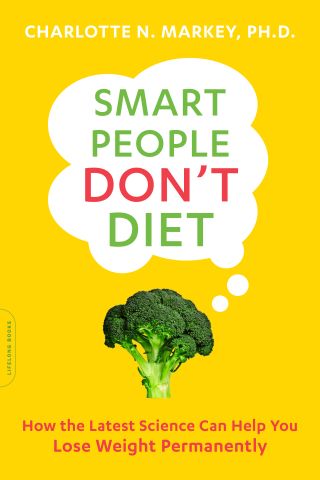Diet
A Day of Eating in Paris
Why do the French eat so well yet stay so slim?
Posted September 30, 2015

I’m not the first person to suggest that Americans stand to learn a lot from the French when it comes to food. The French have been praised for their gourmet meals since the beginning of time. But, as a psychologist who studies eating behaviors, I couldn’t help but take notes on my recent trip to Paris.
Following a long overnight flight, and determined to adjust to the time zone so I could make the most of my brief visit to the city of light, I found my way to a café and ordered a café au lait and an almond croissant (a breakfast treat I’d never indulge in back in the States, but I was fairly certain that this would be a worthwhile caloric indulgence). My first observation in regards to my meal: a carafe of water was brought to each table along with delicate glasses from which to imbibe. The coffee came next; it was delicious, but hardly sweet enough for my American palate. Although I was offered four sugar cubes, that barely did the trick. Nonetheless, the flavorful coffee beautifully complemented my croissant. The pastry was nothing short of divine and I tried to savor each bite as I was sure a native Parisian would. Of course, one petite French coffee would not suffice given I’m accustomed to grande or even vente caffeinated beverages most mornings. I used my English-French translation app to determine how to request another.
Sitting in this café overlooking the Seine River patrons lingered over coffee, breakfast, and one gentleman even appeared to be indulging in a glass of champagne (it was about 10am, but I suppose it was 5 o’clock somewhere). Not one person sat at the café with a computer open, as is common practice in my neighborhood Starbucks (where I do most of my writing these days). In fact, I timidly pulled my laptop from my purse even though I was sure that I was breaking with French etiquette, but unable to resist recording my experience. The setting, the coffee, the food, and the people watching was all magnifique. I wanted to linger, yet was so unaccustomed to doing so that I needed to keep my hands busy. Perhaps this explains the pervasive smoking habits of my fellow patrons.
A few hours later, following the crowds in the afternoon, I found myself at a gelato shop. With a little more than 48 hours in Paris on this trip, I decided to throw all nutrtitional caution to the wind and enjoy a petit cornet (small cone). Much to my delight, this gelato proved to not only be delicious, but a work of art. My two flavors: pistachio and stracciatella (vanilla with chocolate swirl) were deliberately arranged to look like a flower on top of my cone. A kiddy-sized portion by Amerian standards, yet another outstanding eating experience.
As the day was winding down and I had successfully staved off the nap I longed for, I wandered to another café near my hotel. I felt I deserved a glass of wine after my long journey, but was surprised to see the petite glass of Beaujolais that arrived moments after ordering it. Looking around at my fellow diners, the obvious choice seemed to be to order a cheese plate to complement my wine. It arrived with French bread and, of course, at this point, I needed another one of those tiny glasses of red wine. The array of cheeses were all rich and unlike anything typically found in the States. The textures and tastes varied: hard, creamy, sharp, subtle, but all were delicious. I suppose this was meant to be a first course for most, but after enjoying the exquisite (complimentary) dark chocolate that came with the bill, I decided I better quit while I was ahead or risk becoming ill on my first day abroad.
So, what were some lessons learned from a day of eating in Paris? First, why wait for dinner, when wine is served at breakfast? Of course, if you are trying to be anything resembling productive during the day, you need to proceed with caution. Second, there is good bread and there is bad bread. We have only bad bread in most of the U.S. Third, glace (ice cream, often of the gelato variety) is everywhere. Why have lunch when you can have gelato? Fourth, all food is rich in flavor and portions are small. This does not mean you need a second portion (although I often couldn’t resist). Cultural psychologist Paul Rozin’s (2003) discussion of the “French Paradox” has elucidated this point—smaller portions of tasty (often highly fattening food) combined with generous amounts of exercise (usually walking) lead the French to be notably thinner than Americans, despite their butter-laden food. Arguably, the French’s approach to eating, with a focus on taste, portion control, and the ability to enjoy food more fully, enables a culture of eating unlike what most Americans are accustomed to (Rozin et al., 1999). In the U.S., we are often too busy to linger; we combine work with our meals, eat standing up, and otherwise delegate food to the status of necessary but not necessarily enjoyable. By labeling foods “good” and “bad” and trying to avoid the bad, we often overindulge leading to weight gain and compromised health (Markey, 2015).
I should close by admitting that during my subsequent time in Paris I found myself eating both fresh fruit and vegetables. The typical French diet does not exclusively consist of coffee, bread, ice cream, cheese, wine, and chocolate. But, when in Paris…
Charlotte Markey, 2015
Smart People Don’t Diet (Da Capo Lifelong Books and Nero) by Dr. Charlotte Markey is available now, here. You can follow Dr Markey on Twitter (@char_markey), Facebook (Dr. Charlotte Markey and SmartenFit), Pinterest and on her website Smart People Don’t Diet.



